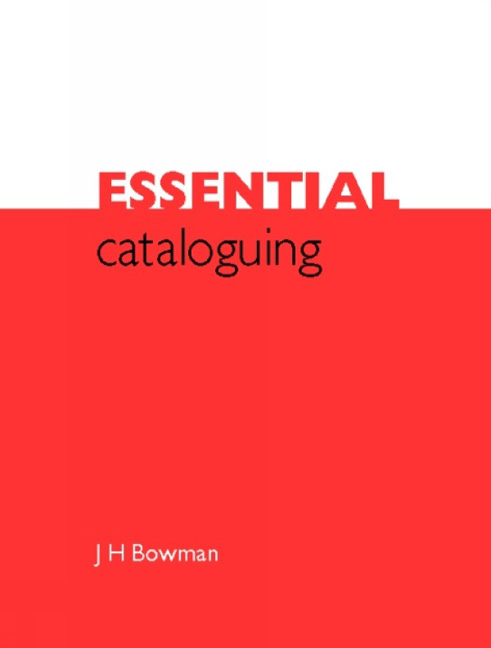Book contents
- Frontmatter
- Contents
- Note to this impression
- Acknowledgements
- 1 Introduction
- 2 Background to cataloguing and AACR2
- 3 Structure of AACR2 and of the MARC 21 format
- 4 Description
- 5 Access points
- 6 Multipart works
- 7 Headings for persons
- 8 Headings for corporate bodies
- 9 Authority control
- 10 Uniform titles
- Bibliography
- Appendix: Catalogue records in MARC 21 format for the examples in this book
- Index
3 - Structure of AACR2 and of the MARC 21 format
Published online by Cambridge University Press: 09 June 2018
- Frontmatter
- Contents
- Note to this impression
- Acknowledgements
- 1 Introduction
- 2 Background to cataloguing and AACR2
- 3 Structure of AACR2 and of the MARC 21 format
- 4 Description
- 5 Access points
- 6 Multipart works
- 7 Headings for persons
- 8 Headings for corporate bodies
- 9 Authority control
- 10 Uniform titles
- Bibliography
- Appendix: Catalogue records in MARC 21 format for the examples in this book
- Index
Summary
AACR2 divides cataloguing into the two main processes that I mentioned on p. 6:
• description
• access points.
The arrangement of the code depends on this basic distinction.
The whole of AACR2 Part I covers description. Because of the way the chapters are laid out there is considerable repetition, and it is usually necessary to look at two chapters at the same time.
This is because Chapter 1 is written in very general terms. It is intended to apply to any kind of material that might need to be catalogued: it is not specifically about books, or videos, or electronic resources, or anything else. But because these specific formats – and the rest – each have unique features they need chapters of their own, to elaborate on Chapter 1 and to give more specific examples.
In order to avoid too much repetition, each of Chapters 2–12 keeps referring back to Chapter 1, and uses the same numbering system for its sections. This means that once you know that section. 4 of Chapter 1 refers to the Publication, distribution, etc., area of the description, you automatically know that section. 4 of Chapter 7 will refer to the Publication, distribution, etc., area for videorecordings.
AACR2 Chapter 13 is an exception to this scheme. It does not follow the same arrangement as Chapters 1–12, but deals solely with the making of analytical entries.
The access points aspect of cataloguing can be further broken down, as follows:
• Selection of access point
For example, in cataloguing an edition of Macbeth, who is the author? Answer: Shakespeare, but at this stage we are not concerned about how to spell his name.
• Selection of name to be used as basis for heading
Continuing with the same example, although there was a long period when the spelling ‘Shakspere’ was common, we shall use the form ‘William Shakespeare’ because that is how his name is usually spelt nowadays. Note that in choosing this form we may be departing from the form that appears in the item itself.
- Type
- Chapter
- Information
- Essential Cataloguing , pp. 12 - 19Publisher: FacetPrint publication year: 2003



